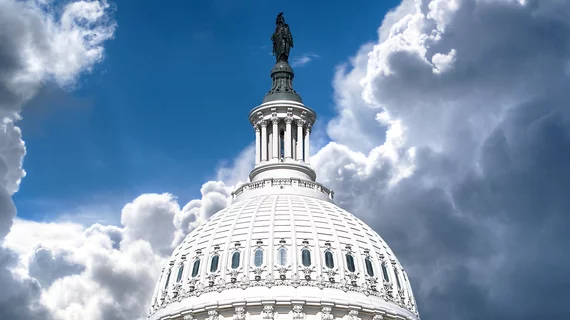ACR to Senate Finance: Failing to address radiologist shortage could drive up US healthcare costs
Failing to address radiologist shortages could drive up healthcare costs for patients and the Medicare program, the American College of Radiology recently warned Congress.
ACR shared its concerns in a letter to the Senate Finance Committee, which is exploring ways to address a shortfall of physicians that could reach 140,000 by 2036. Bipartisan lawmakers released a “policy outline” in late May with several possible remedies.
The Senate roadmap is centered around primary care and psychiatry, though it includes plans to potentially “expand and improve” other unspecified “specialties in shortage.” ACR underlined the importance of imaging in these conversations. Despite growing demand, the number of radiology residency positions has remained stagnant, with 1,084 in 2010 and 1,006 in 2023.
“If the number of radiologists continues to decrease while the amount and complexity of exams and procedures increase, patients may receive unnecessary surgical interventions—driving up healthcare costs for both individuals and the Medicare program,” Cynthia R. Moran, ACR’s executive VP, wrote in a June 21 letter to Finance Chair Sen. Ron Wyden, D-Ore., and colleagues. “Ensuring an adequate supply of physicians is integral to the future of our nation’s healthcare infrastructure.”
ACR outlined several potential remedies to address radiologist shortages, which it has previously proposed to Congress on multiple occasions. Those include increasing the number of Medicare-supported Graduate Medical Education positions, along with ensuring radiologists in shortage areas are only interpreting necessary imaging tests.
Moran also emphasized the importance of addressing inadequate physician payment. When adjusting for inflation, physician reimbursement under the Medicare program decreased 29% between 2001 to 2024, according to the American Medical Association.
“Practicing physicians face many challenges in providing high quality care to their patients. These challenges have been exacerbated by a long-broken Medicare physician payment system, which has failed to keep pace with the true cost of physician practice,” Moran wrote. “Failure to address this basic underlying reimbursement deficiency not only threatens the continued ability of physicians to care for their patients but it also makes it more difficult to recruit new physicians—let alone those who are willing and able to practice in rural and underserved communities,” she added later.
ACR, the Society of Interventional Radiology and other medical societies also penned a second letter to Senate Finance as part of the GME Advocacy Coalition. The college highlighted both messages in a June 27 news update.

